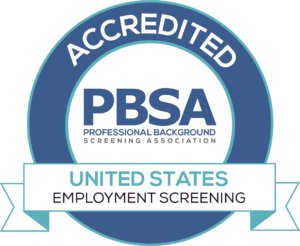Job seekers will continue to have the upper hand through 2023 despite steady declines in job growth.
Now more than ever, employers need to reduce their time to hire while recruiting intelligently as turnover increases and the talent landscape remains competitive.
Moving further into 2023 and beyond, hiring trends will continue to evolve– and not usually to the benefit of the employer.
In the spirit of promoting efficiency all around, we have come up with a few tips that may be of use to those experiencing hiring challenges:
1. Consolidate Your Systems and Screening Solutions
The plurality of the word “resources” in human resources can’t be underemphasized.
From recruiting, screening, onboarding, and training to payroll, benefits, safety, attendance, and morale, there are more moving pieces within a human resources department than in almost any other.
We find it surprising how many organizations opt to complicate the management of these responsibilities by using a number of different technologies.
While there are certainly reasons for this, they rarely offset the inconvenience. There are too many existing and emerging technologies with robust functionality in almost all areas mentioned above not to consider bundling them together into one package.
Even if different systems are used, integrations can often be forged to marry systems together. However, an organization will need to pick its systems wisely to ensure they communicate effectively with one another.
Not All Integrations Are Made Equal
Just because there is an existing integration between two technologies doesn’t mean it’s particularly flexible or workable to the extent that it needs to be.
If you are currently working with a number of technologies and looking to streamline, we recommend choosing a single technology with extensive functionality and building around it.
Luckily for our customers, Peopletrail has powerful integrations with hundreds of ATS and HRIS systems, making the integration of background screening processes painless regardless of the technologies employed.
Why Not Bundle Your Screening Solutions?
We have encountered many organizations that have different vendors for their background screening, drug testing, and occupational health screening needs, even though price and quality of service could remain constant upon consolidation.
Again, there may be reasons for this, but it’s unlikely they justify the hassle of maintaining separate integrations and receiving reports for each candidate from multiple sources.
2. Proper Document Automation/Management Is a Must
When speaking about background screening, compliance demands are high.
Consent must be properly obtained, candidates must be notified of any intent to act on negative information, and if adverse action is to be taken, the candidate needs to be made aware and duly informed as to why.
These requirements can create bottlenecks in the hiring process, and a single oversight can open the door to lawsuits. For these reasons, document management and automation are essential, particularly for the following:
- Disclosures and Authorizations
- Pre-Adverse and Adverse Action Workflows – read more
- Post Hire Documentation (Form I-9) – read more
An Important Note
Most reputable screening vendors will provide document management services. That being said, it’s important to select a vendor that builds processes around both client and candidate needs. A document management process does little to streamline if confused candidates are calling in left and right with questions about their disclosures, the screening process, or an automated notice they received.
Be sure to inquire about the specifics of these processes when embarking on your vendor search.
3. Consider Utilizing a Decision Reporting Feature
A robust screening platform will likely include an automated disposition tool.
To over-simplify, such a tool will greenlight reports that meet an established criteria, yellow-light reports in need of review, and red-light reports that don’t meet company standards.
The result, in almost all cases, is saved time and efficient, unbiased decision-making.
Defining Your Criteria
One of the only fingers an employer has to lift when automating a decision reporting process is defining their company’s pass/review/fail criteria. We have helped a number of our clients determine the best criteria for their needs and effectively apply them.
These criteria can be applied to the entire organization or modified depending on a prospective hire’s department/position.
4. Frequently Asses Recruiting Strategies
When recruiting in mass, the following questions should be clearly answered:
- What is our ideal candidate persona?
- How can we better understand candidate needs?
- Is our pre-hire process optimized for efficiency alone, or is candidate experience also a primary concern?
- How is our organization reducing bias?
- How effectively are we screening candidates?
- Are we leveraging all the tools available for effective, informed hiring?
- Are we tracking all the relevant metrics, such as time to hire, quality of hire, candidate diversity, attrition rate, etc.?
Given the current employment climate, a recruiting process should not remain unevaluated for more than a year. There are too many emerging resources, evolving trends, and changing requirements to set and forget for too long.
Dispute Mitigation
While it didn’t make the top 4, dispute mitigation definitely gets an honorable mention as a way to streamline the hiring process.
If your screening provider has an inadequate dedication to compliance, you will likely notice a higher dispute frequency. Disputes take up to 30 days to resolve, add time to the process, and can create (often undue) strain on the relationship between candidate and employer.
How Are Background Check Disputes Handled?
Dedication to compliance goes a long way in keeping the hiring process moving smoothly and efficiently– and both the screening provider and the employer have their responsibilities. You can learn more about the ins and outs of FCRA compliance here.
We hope you found this article helpful. For more information, feel free to reach out to us.











